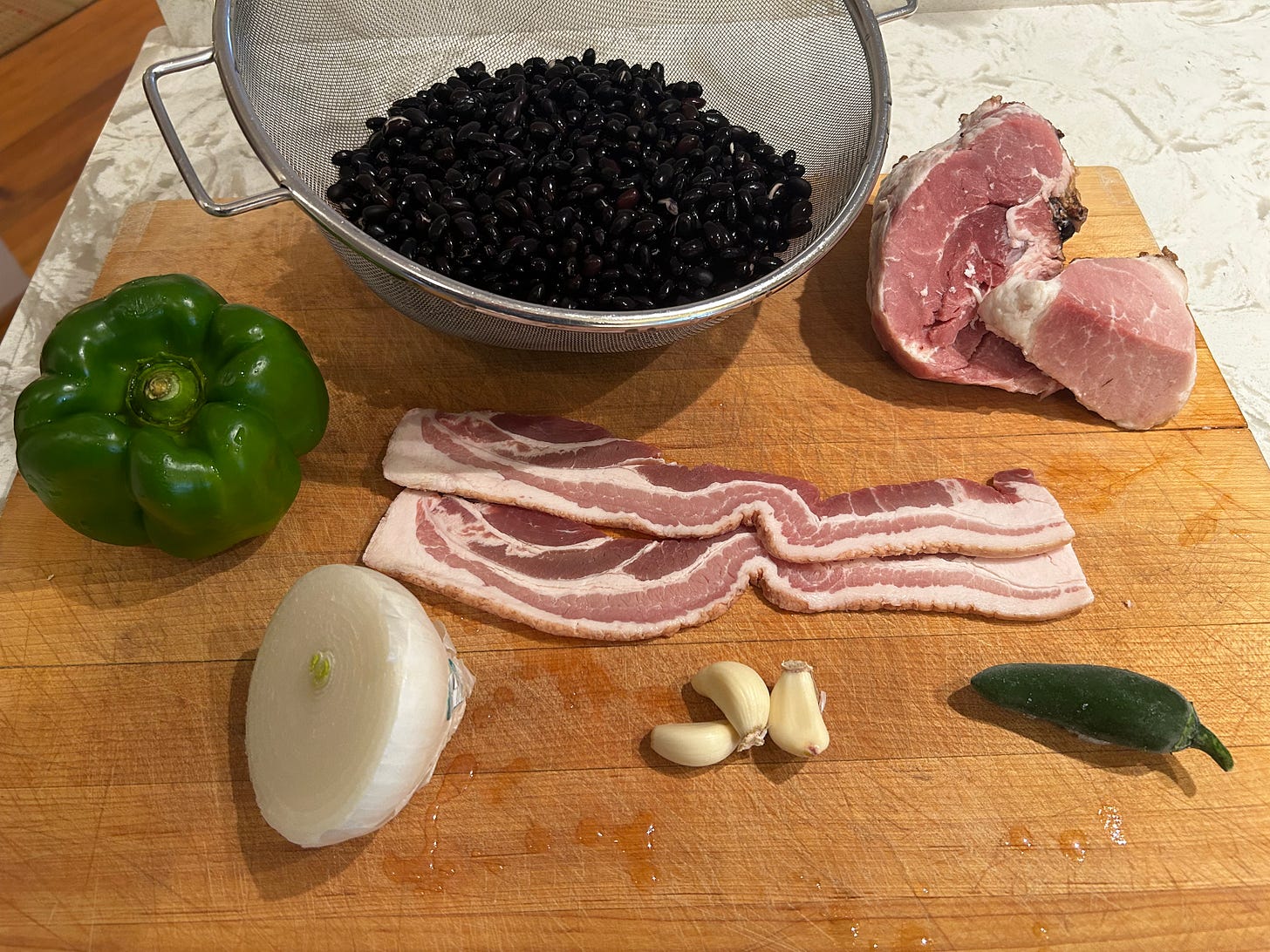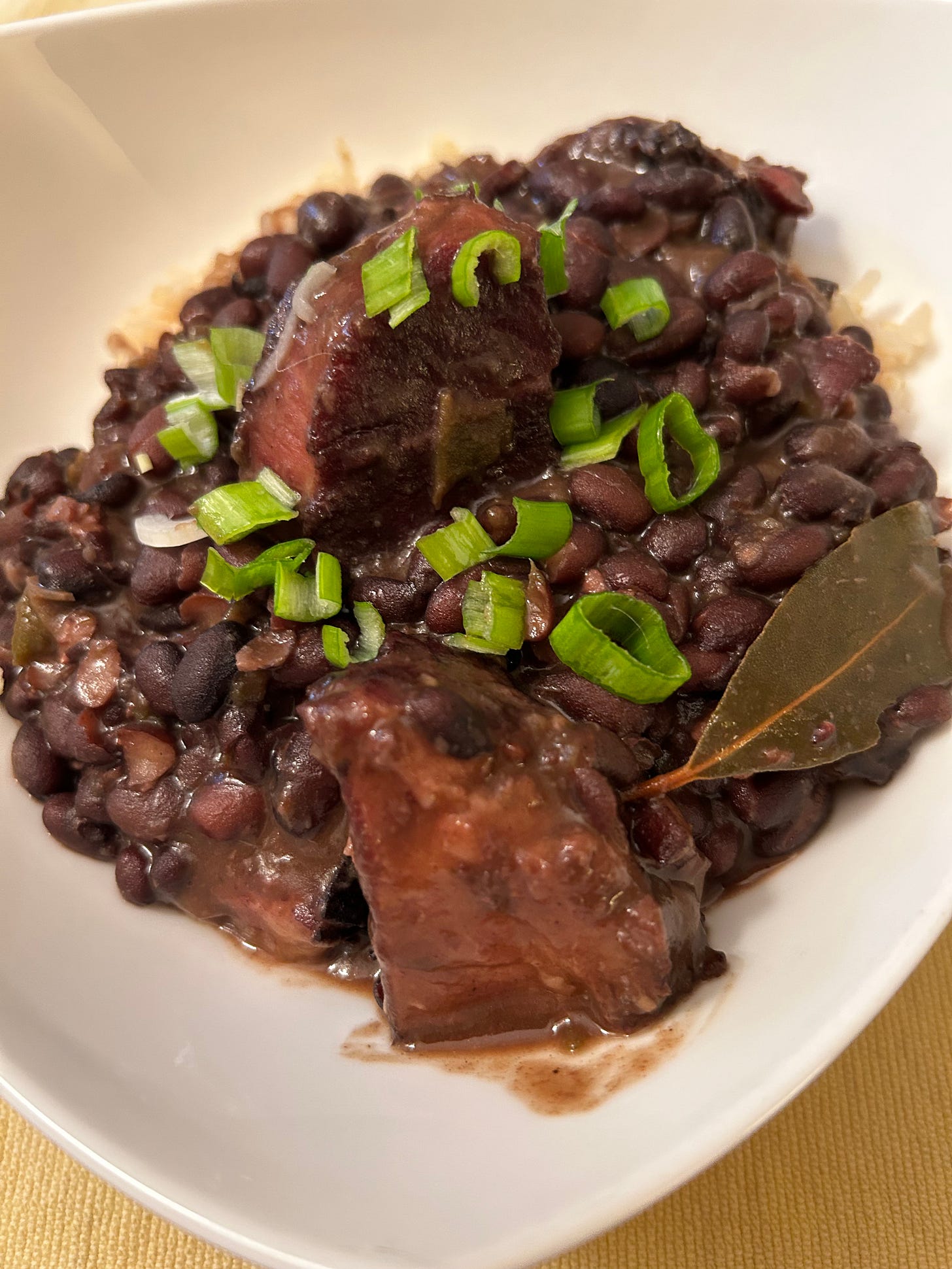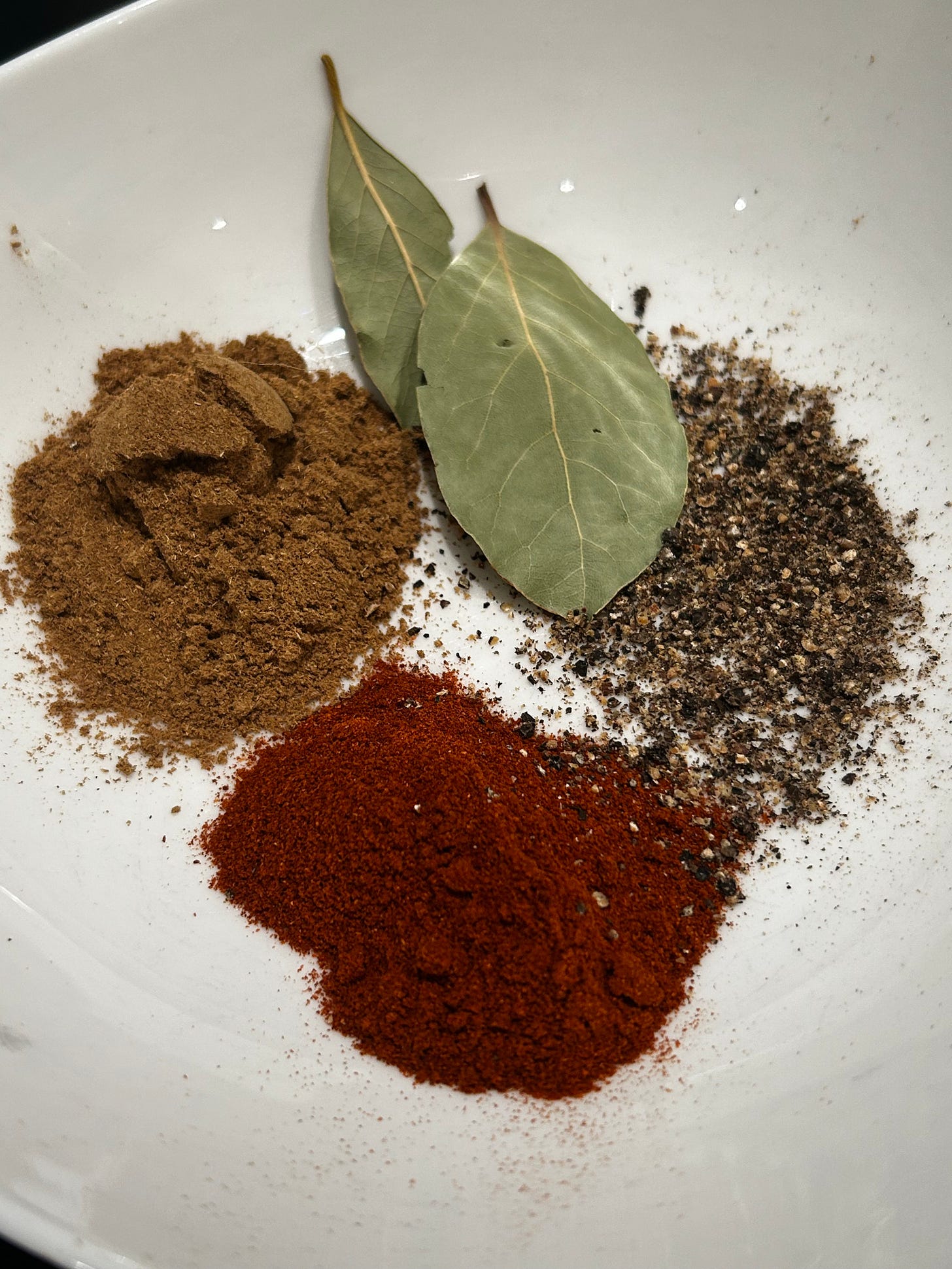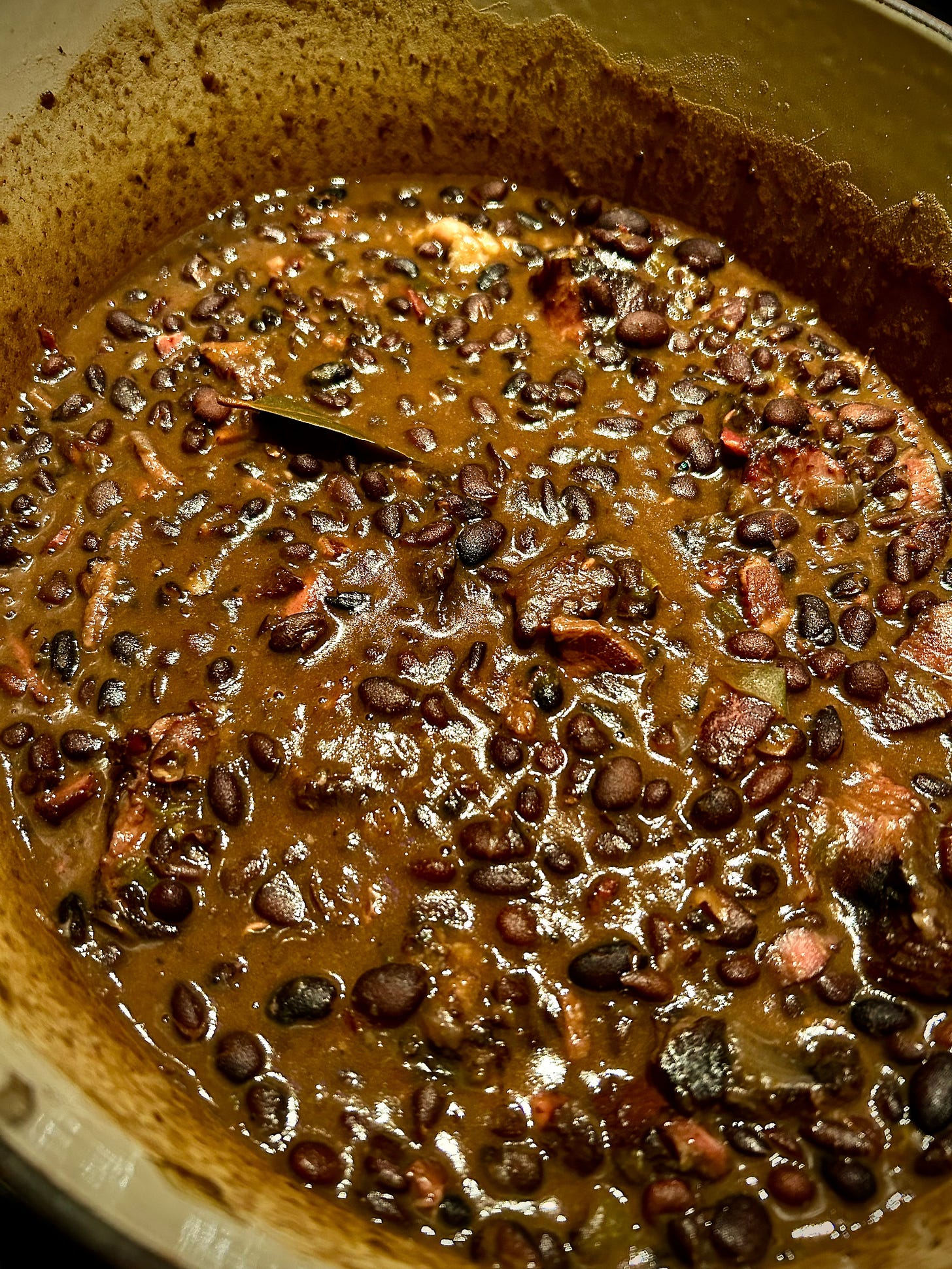Cuban Black Beans
The world’s cuisines offer a bounty of delicious gluten-free dishes. This is one of them.
When I think about gluten-free meals, my mind often turns to the many recipes from around the world that don’t need any modification to make them gluten-free. I previously shared one such recipe with you: Thai red curry. Another I make frequently is this traditional Cuban black bean recipe, seasoned with ham and other flavorful ingredients. Black beans have a lovely creamy texture and easily meld with other flavors. Many countries in the Caribbean and Central and South America have similar dishes, such as Brazil’s feijoada, which I’ll make for you some day.
This recipe doesn’t require much effort, as all you need to do is put all the ingredients together in a large pot and turn on the heat.
Many black bean recipes will tell you to boil the dry beans and let them sit in the hot water for an hour before adding the other ingredients. But I think the recipe is easier if you soak the dried beans overnight in water with a bit of baking soda. Soaking them overnight tenderizes them, so all you have to do is drain and rinse them before throwing them in the pot with everything else.
Serve the beans over rice alongside cooked greens, such as collards or kale. The cooked beans will keep for several days in the fridge, so making a large batch of this can save you from having to cook again tomorrow!
Ingredients:
1 pound dried black beans soaked overnight in water with ½ teaspoon baking soda (see note1)
¼ pound smoked bacon, chopped (see note2)
1 pound smoked ham, cut into cubes (see note3)
1 cup chopped yellow onion
3 cloves fresh garlic, crushed
1 green bell pepper, seeded and chopped
1 jalapeno pepper, chopped, or ¼ teaspoon cayenne pepper powder
2 teaspoons paprika (see note4)
3 teaspoons ground cumin
2 bay leaves
4 cups chicken stock (see note5)
To add at the end:
1 tablespoon apple cider or red wine vinegar
Ground black pepper and salt to taste

Instructions:
Drain the soaked beans in a colander and rinse them under cold water
Put all the ingredients, except the vinegar, salt, and pepper, in a large pot and turn the heat to high
If the stock does not provide enough liquid to cover the beans, add a cup or two of water to make sure the beans are covered
When the liquid starts to boil, turn the heat down to a simmer, cover the pot, and simmer for 2 hours, stirring occasionally
Because I like the beans to be fairly thick (not soupy), I uncover the pot for the last 30 minutes to allow some of the liquid to evaporate
When the beans are thick enough, taste them to see if it needs salt (there be enough already from the ham and bacon), and add some if needed, along with a generous grind of black pepper and the tablespoon of vinegar—stir to blend
Serve the black beans with rice and a side of green vegetables
First, the beans will expand as they soak, so make sure to use plenty of water, and add more if they start to swell beyond the surface of the water. Second, I always add baking soda when I soak beans, since it seems to help tenderize the beans and break down some of the elements that cause the famous flatulence associated with bean consumption.
Traditionally, this ingredient would be salt pork, but, as bacon is much easier to find, I use it instead, and it works just as well.
I buy large smoked hams and cut them into pound-sized chunks that I freeze for later use (if it’s a bone-in ham, the bone is also great for flavoring black beans).
I often use half regular paprika and half smoked paprika for extra smokey flavor.
To make your own chicken stock, buy about 3 pounds of inexpensive chicken parts, such as backs, necks, and feet (I also save the bones from roast chicken for stock). Put the chicken in a stock pot and rinse it in hot water several (pouring out the rinsing water), then add about 3–4 quarts of water—enough to cover the chicken. (I always add more water as the stock simmers and evaporates, as I want to get at least 3 quarts of stock out of this.) Put the pot on high heat, and when it first comes to a boil, skim off the froth that rises to the top. Turn down the heat and let it simmer for at least 3 hours. (I let mine simmer for as long as 12 hours, when I’m sure to have extracted all the chicken flavor and nutrients!) If you have vegetable stock, such as the one from this recipe, you can use that as well—I’ve used it when that was all I had, and I couldn’t really tell the difference!





